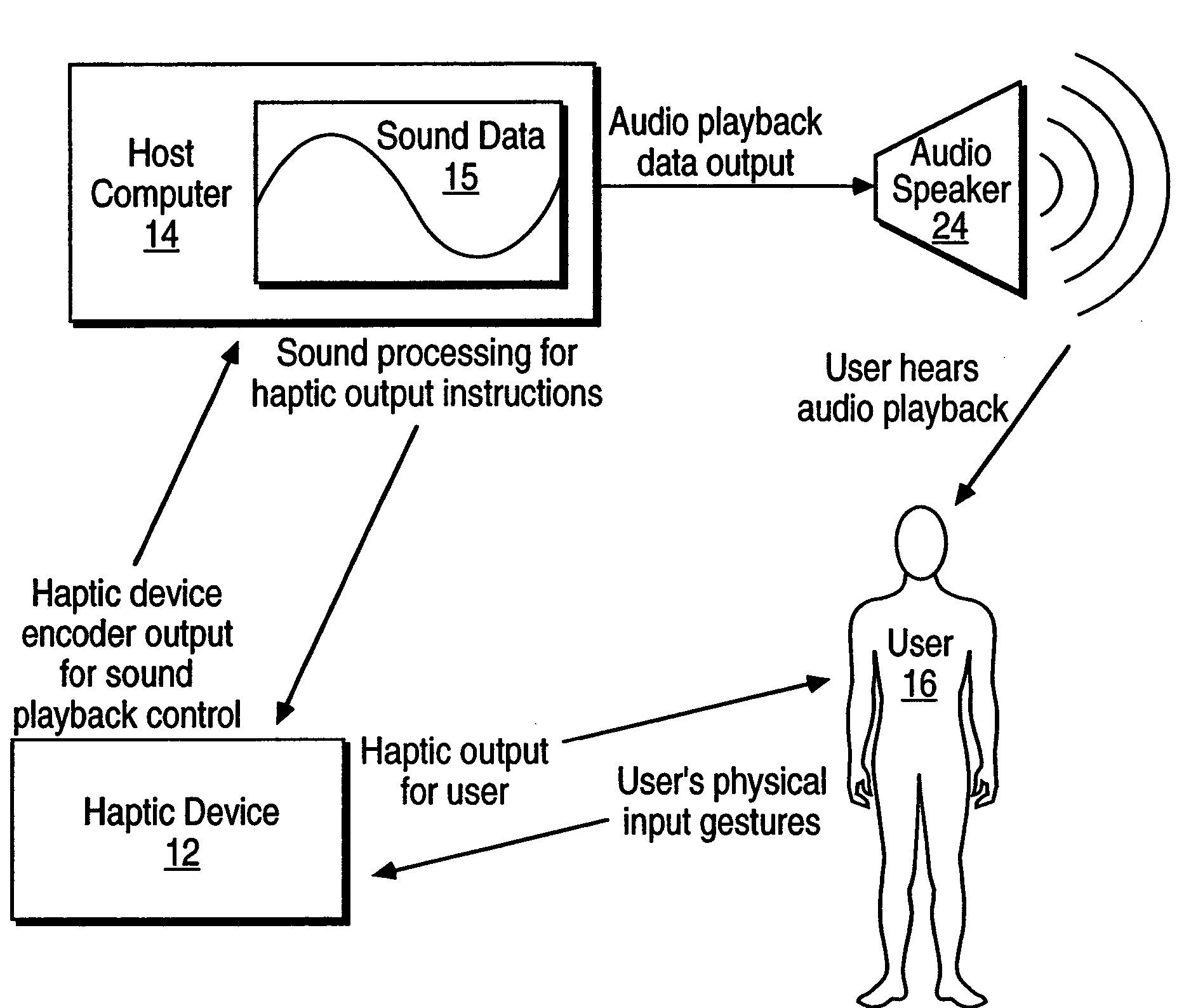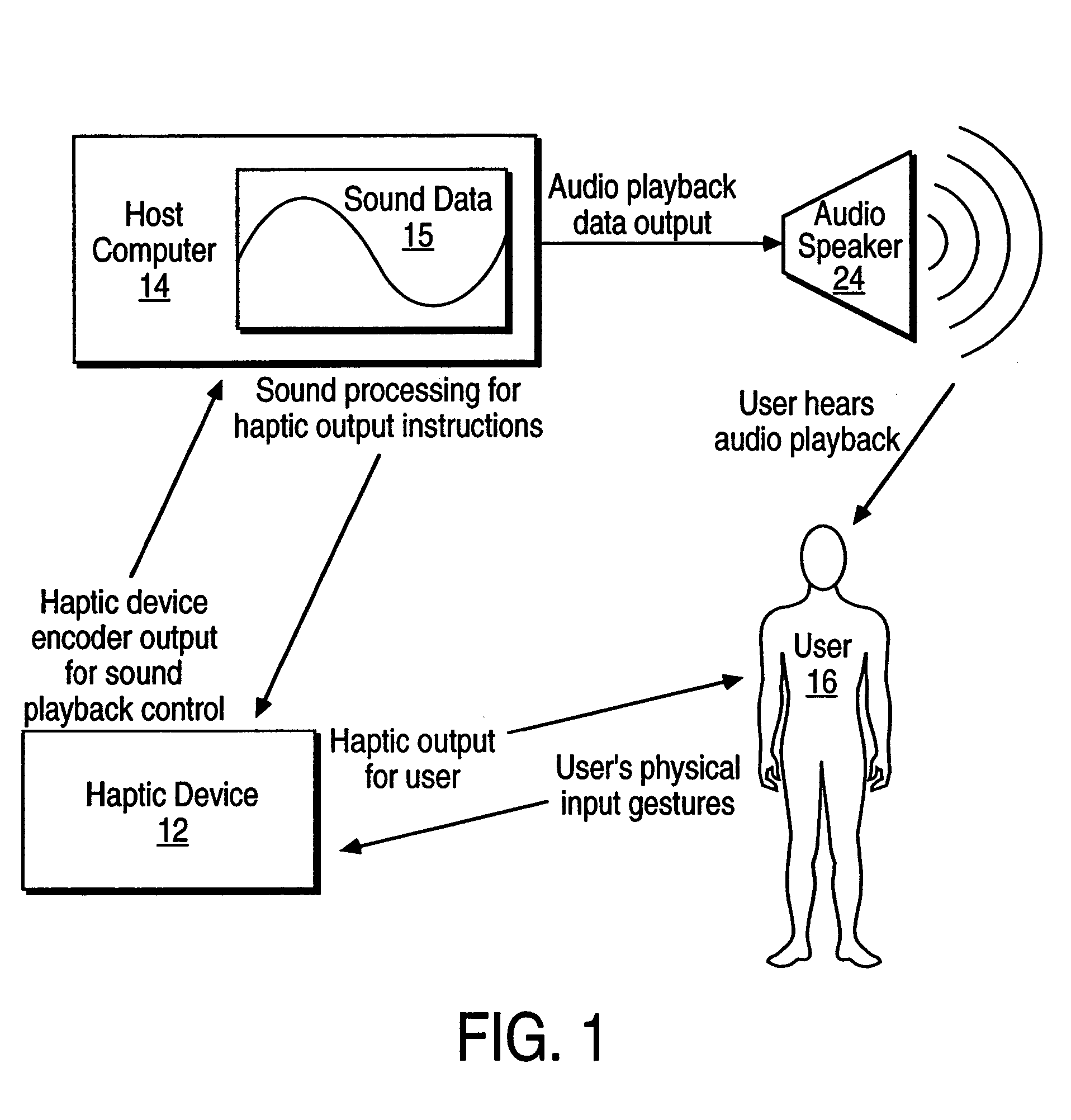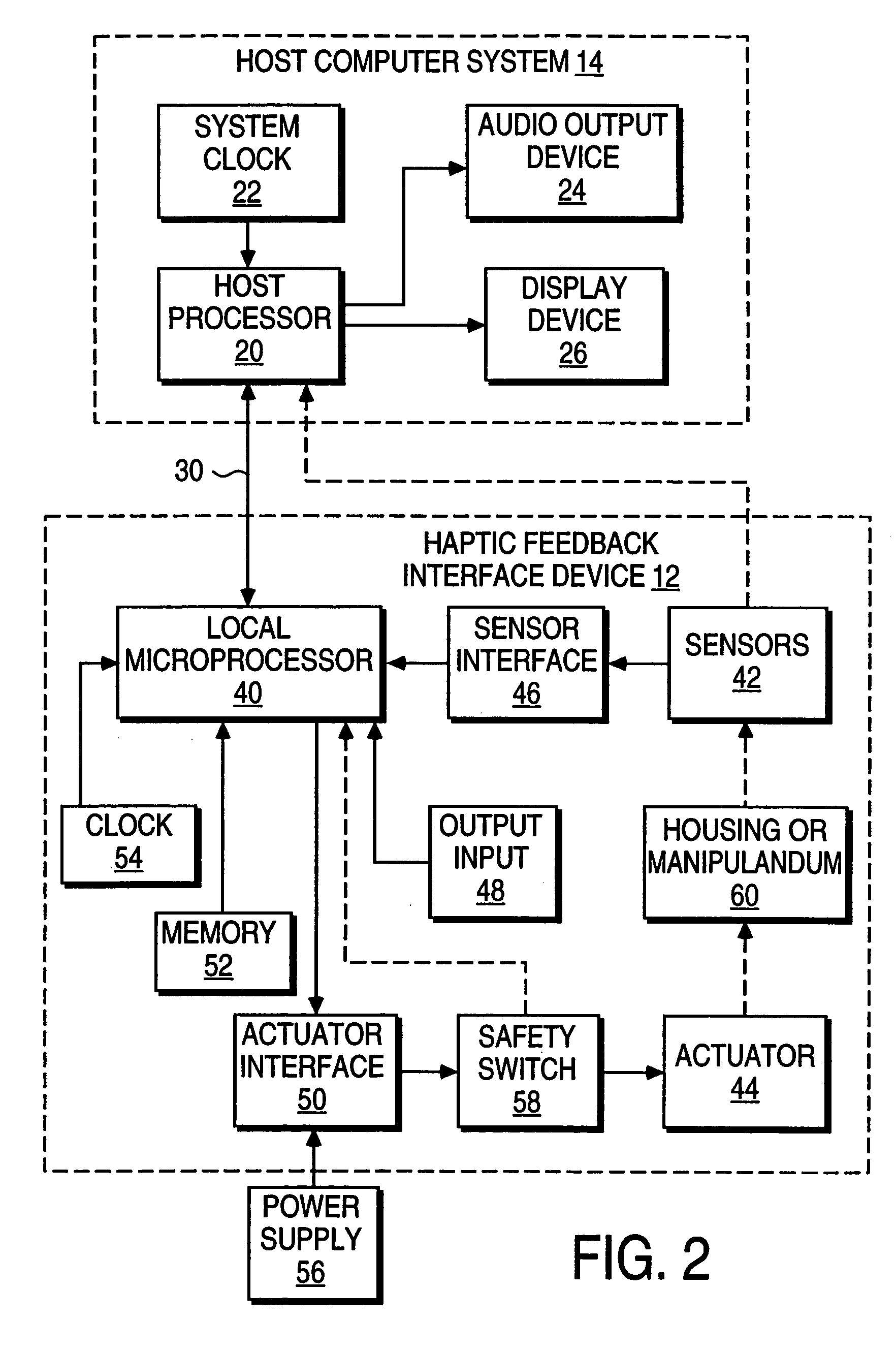Sound data output and manipulation using haptic feedback
a technology of haptic feedback and sound data, applied in the field of systems, can solve the problems of unidirectional interface types, difficult to reproduce physical relationships with computers, and inability to receive physical feedback, etc., and achieve the effect of accurate and efficient control over playback and editing
- Summary
- Abstract
- Description
- Claims
- Application Information
AI Technical Summary
Benefits of technology
Problems solved by technology
Method used
Image
Examples
embodiment 100
[0042]FIG. 3 is a side cross-sectional view of a mouse embodiment 100 of device 12 suitable for use with the present invention.
[0043]Mouse device 100 includes a housing 101, a sensing system 102, and an actuator 104. Housing 101 is shaped to fit the user's hand like a standard mouse while the user moves the mouse in the planar degrees of freedom and manipulates the buttons 106. Other housing shapes can be provided in many different embodiments.
[0044]Sensor 102 detects the position of the mouse in its planar degrees of freedom, e.g. along the X and Y axes. In the described embodiment, sensor 102 includes a standard mouse ball 110 for providing directional input to the computer system. Alternatively, an optical sensor or other type of sensor can be used.
[0045]Mouse device 100 includes one or more actuators 104 for imparting haptic feedback such as tactile sensations to the user of the mouse. Actuator 104 is coupled to the housing 101 to provide haptic feedback to the user. In one embo...
embodiment 200
[0053]FIG. 5 is a flow diagram of one pre-processing embodiment 200 of the present invention. This method can be implemented by an application program, such as a sound composition / editing program, which is the example used in the described embodiment. Alternatively, the method can be implemented using a separate application program or driver program that is running simultaneously with a sound composition / editing program. Other types of application programs can also be used with the present invention.
[0054]The method starts at 202, and in step 204, any settings made by the user are read in. For example, the user may have previously entered settings in fields displayed in a graphical user interface; examples of such a user interface are described below with reference to FIGS. 10 and 11. The settings allow the user to customize the feel of the haptic sensations and their relation to the sound that is played or edited. User settings can also be input in other ways, e.g. by a program tha...
PUM
 Login to View More
Login to View More Abstract
Description
Claims
Application Information
 Login to View More
Login to View More - R&D
- Intellectual Property
- Life Sciences
- Materials
- Tech Scout
- Unparalleled Data Quality
- Higher Quality Content
- 60% Fewer Hallucinations
Browse by: Latest US Patents, China's latest patents, Technical Efficacy Thesaurus, Application Domain, Technology Topic, Popular Technical Reports.
© 2025 PatSnap. All rights reserved.Legal|Privacy policy|Modern Slavery Act Transparency Statement|Sitemap|About US| Contact US: help@patsnap.com



